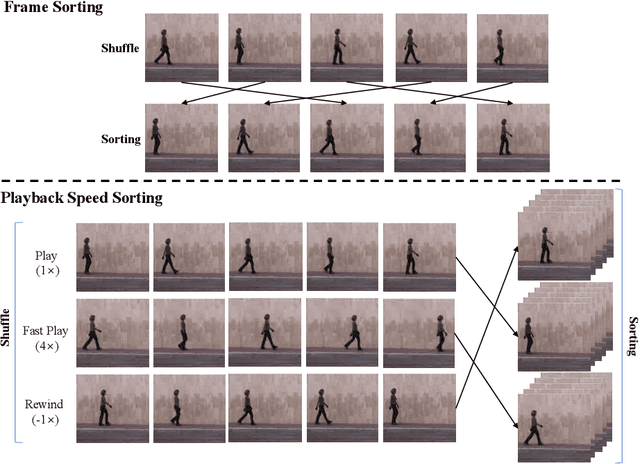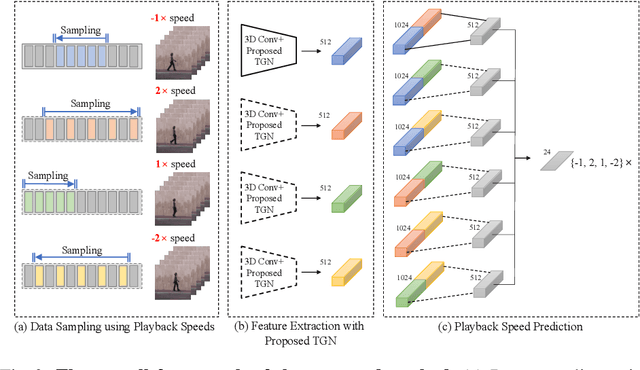Hyeon Cho
ORC: Network Group-based Knowledge Distillation using Online Role Change
Jun 01, 2022



Abstract:In knowledge distillation, since a single, omnipotent teacher network cannot solve all problems, multiple teacher-based knowledge distillations have been studied recently. However, sometimes their improvements are not as good as expected because some immature teachers may transfer the false knowledge to the student. In this paper, to overcome this limitation and take the efficacy of the multiple networks, we divide the multiple networks into teacher and student groups, respectively. That is, the student group is a set of immature networks that require learning the teacher's knowledge, while the teacher group consists of the selected networks that have performed well. Furthermore, according to our online role change strategy, the top-ranked networks in the student group are able to promote to the teacher group at every iteration and vice versa. After training the teacher group using the error images of the student group to refine the teacher group's knowledge, we transfer the collective knowledge from the teacher group to the student group successfully. We verify the superiority of the proposed method on CIFAR-10 and CIFAR-100, which achieves high performance. We further show the generality of our method with various backbone architectures such as resent, wrn, vgg, mobilenet, and shufflenet.
itKD: Interchange Transfer-based Knowledge Distillation for 3D Object Detection
May 31, 2022



Abstract:Recently, point-cloud based 3D object detectors have achieved remarkable progress. However, most studies are limited to the development of deep learning architectures for improving only their accuracy. In this paper, we propose an autoencoder-style framework comprising channel-wise compression and decompression via interchange transfer for knowledge distillation. To learn the map-view feature of a teacher network, the features from a teacher and student network are independently passed through the shared autoencoder; here, we use a compressed representation loss that binds the channel-wised compression knowledge from both the networks as a kind of regularization. The decompressed features are transferred in opposite directions to reduce the gap in the interchange reconstructions. Lastly, we present an attentive head loss for matching the pivotal detection information drawn by the multi-head self-attention mechanism. Through extensive experiments, we verify that our method can learn the lightweight model that is well-aligned with the 3D point cloud detection task and we demonstrate its superiority using the well-known public datasets Waymo and nuScenes.
Self-Supervised Spatio-Temporal Representation Learning Using Variable Playback Speed Prediction
Mar 05, 2020



Abstract:We propose a self-supervised learning method by predicting the variable playback speeds of a video. Without semantic labels, we learn the spatio-temporal representation of the video by leveraging the variations in the visual appearance according to different playback speeds under the assumption of temporal coherence. To learn the spatio-temporal variations in the entire video, we have not only predicted a single playback speed but also generated clips of various playback speeds with randomized starting points. We then train a 3D convolutional network by solving the formulation that sorts the shuffled clips by their playback speed. In this case, the playback speed includes both forward and reverse directions; hence the visual representation can be successfully learned from the directional dynamics of the video. We also propose a novel layer-dependable temporal group normalization method that can be applied to 3D convolutional networks to improve the representation learning performance where we divide the temporal features into several groups and normalize each one using the different corresponding parameters. We validate the effectiveness of the proposed method by fine-tuning it to the action recognition task. The experimental results show that the proposed method outperforms state-of-the-art self-supervised learning methods in action recognition.
 Add to Chrome
Add to Chrome Add to Firefox
Add to Firefox Add to Edge
Add to Edge